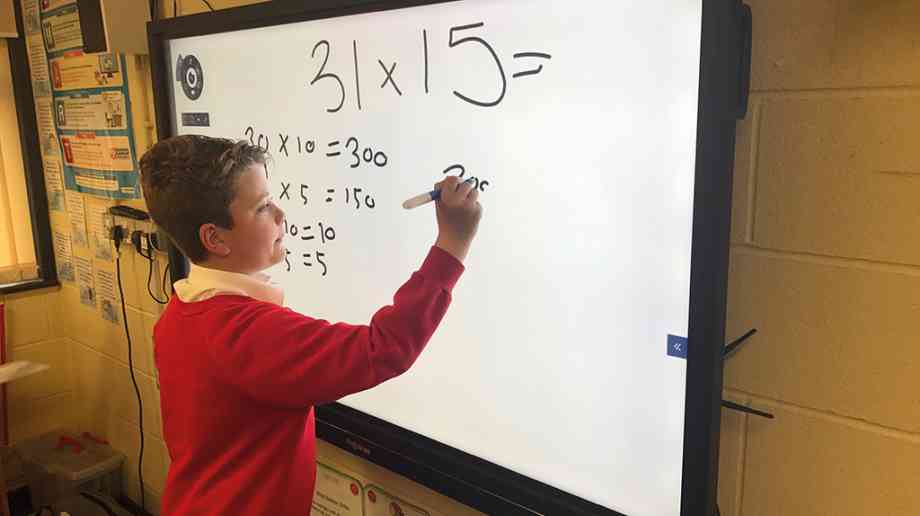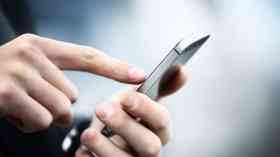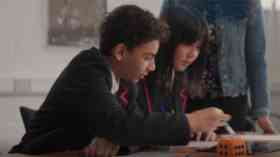
Dipping into the 21st Century pencil case
Aled Williams, deputy head teacher of All Saints Church in Wales Primary School, explains how it has developed a strong audio visual and technology presence in the school to give pupils the opportunity to learn in a 21st Century way
I believe that technology, has become part of a pupil’s 21st Century pencil case. It’s so integral to their everyday life, and provides them with everything they need to perform research and collaborate with others, so as a responsible school, it’s crucial for us to ensure that both pupils and teachers alike are equipped with the skills to make use of the tools at their disposal.
In our ICT suite, we have a range of different devices, including 15 Mac Minis, three MacBooks, six HP laptops and five Chromebooks. We also have a number of iPads which are used across the school; some of these are set up for Foundation phase, and others for Key Stage 2, as the apps we need to buy and use for the different year groups are varied. While these devices are all housed in the ICT suite, they are often only there in the mornings, as people come to pick them up and use them in their lessons.
The children use them all the time, and the message we put to them is that they don’t need to ask to use a pencil, so they don’t have to ask to use an iPad or other device; as long as the pupils can show me and justify how they’re using it to present their work, that’s all I ask of them.
CROSS-PLATFORM CONFIDENCE
We want our pupils to be familiar with different technologies, so we have Android, Chrome, Windows and Apple devices available for them to use. They will have a preference – as many of us do – but at least this way, they will have had exposure to all of the potential platforms that they might come across in secondary school and beyond.
Pupils today have grown up not knowing life without technology, so we often see children teaching adults how to use devices. Take my daughter for example: she’s currently in Year 2 and has shown her grandparents how to use their iPad. They think she’s a genius; she’s not, but she is used to technology and naturally doesn’t have a fear of using it. We have children in Year 2 now who have the same digital skills as our Year 5 pupils, so we have to keep providing opportunities for them to keep their learning going over a lifelong period.
In addition to the mobile technology we have on-site, we also have interactive whiteboards in many of our classrooms, and more recently, we’ve invested in 4k HD‑ready touch screens. All of these displays are connected to computers that have the AirServer app. With this, we can show the content of multiple devices on the screen at once, as opposed to the Apple TV, which only allows you to beam one device at a time.
Not only does this enable pupils to showcase the work they’ve done, but it also promotes collaboration with the whole class. For example, you can show four or five pieces of work on the board at once, and make comparisons between the different examples, looking at how bits of one piece might improve another and vice versa, which is a really powerful tool for peer assessment.
We also have sound recording devices and cameras, which are used predominantly by our younger pupils, as they’re more tactile. We use BeeBots for programming in the foundation stage, and we have walkie‑talkies and phones that can be used in the roleplaying area, so we get an even wider range of devices, not just the traditional laptop or PC learning experiences.
IT'S ABOUT THE LEARNING
The problem with the pressure around edtech investment is that schools often make purchases without really knowing what to do with the technology once they have it. I’ve worked in schools that have over 60 iPads locked away in a cupboard, with no real indication of how they plan to use it.
They could have over £10,000 of kit, simply because other schools have them. We don’t need technology for brilliant classrooms, but we do need teachers who understand the value and purpose of it. As it’s something that pupils will use every day, boosting teachers’ confidence to get involved is essential.
When you look at technology as a teaching and learning experience, rather than just a technological advancement that teachers have to get involved with, it really improves the outlook of even the most technophobic staff members. We have developed simple ways for technology to be used by the teacher as well, so that they can get hands-on as much as possible.
One of the main strategies here is through tweeting, which we do every day. We now use hashtags to combine the content of each year group and subject, so if you’re a maths, PE or art co-ordinator, you can archive all of the posts, videos and images together, if you ever need to provide evidence of what’s been going on in your lessons. This is really powerful in subjects like PE, where very little is recorded on paper or in books. With Twitter, you can simply show off the photos of the great work being done with school sports and PE, and we’re again using the iPads to achieve this.
THE APPROPRIATE TECHNOLOGY
The most important thing for teachers to learn and understand is what technologies are appropriate for the lesson at hand.
Sometimes, it is better to have a large sheet of paper shared between a group of pupils to write and draw on, but this can then be enhanced. By taking a photo of the finished sheet, teachers and pupils can annotate their original ideas and share their work online. It’s all about encouraging pupils to think differently.
This applies even more when things go wrong with the technology. While many people (pupils and teachers alike) would usually be put off by the fact that something isn’t working, I like to see this as a learning opportunity. I love it when any of my pupils say “it’s not working,” as this means that things are going to get interesting, we’ll have a good laugh trying to fix it, and we’ll learn even more. After all, you don’t learn in straight lines, straight lines are boring.
Let your pupils get it wrong and make a mess of it, because through this, they’ll learn more and be far more enthused by the success of when it does work. Trust your pupils to figure it out.
By combining teaching and learning with a digital platform, you’re developing responsible digital citizens who know how to use technology appropriately and safely, and when not to use technology at all. This is how you create true impact with the digital resources at your disposal, so break them out of the cupboard. L
Further Information:Latest News
09/01/2026 - 10:13
The measure, added to the Children’s Wellbeing and Schools Bill, delivers on the commitment made in the government’s manifesto to bring multi academy trusts into the inspection system.
08/01/2026 - 10:30
The government is launching a new app allowing students to view their GCSE results on their phones for the first time from this summer.
08/01/2026 - 09:45
Education Business LIVE has announced that Professor Samantha Twiselton OBE of Sheffield Hallam University will speak at the event in March 2026, delivering two thought-provoking sessions focused on initial teacher training and SEND provision.
07/01/2026 - 10:10
Solve for Tomorrow is a free, curriculum-linked programme which is mapped to Gatsby Benchmarks 4, 5, and 6, helping teachers embed careers education without adding to workload.
06/01/2026 - 10:24
London's universal free school meals programme has not led to improvements in pupil attainment during its first year, but has eased financial pressure and reduced stress for families.







